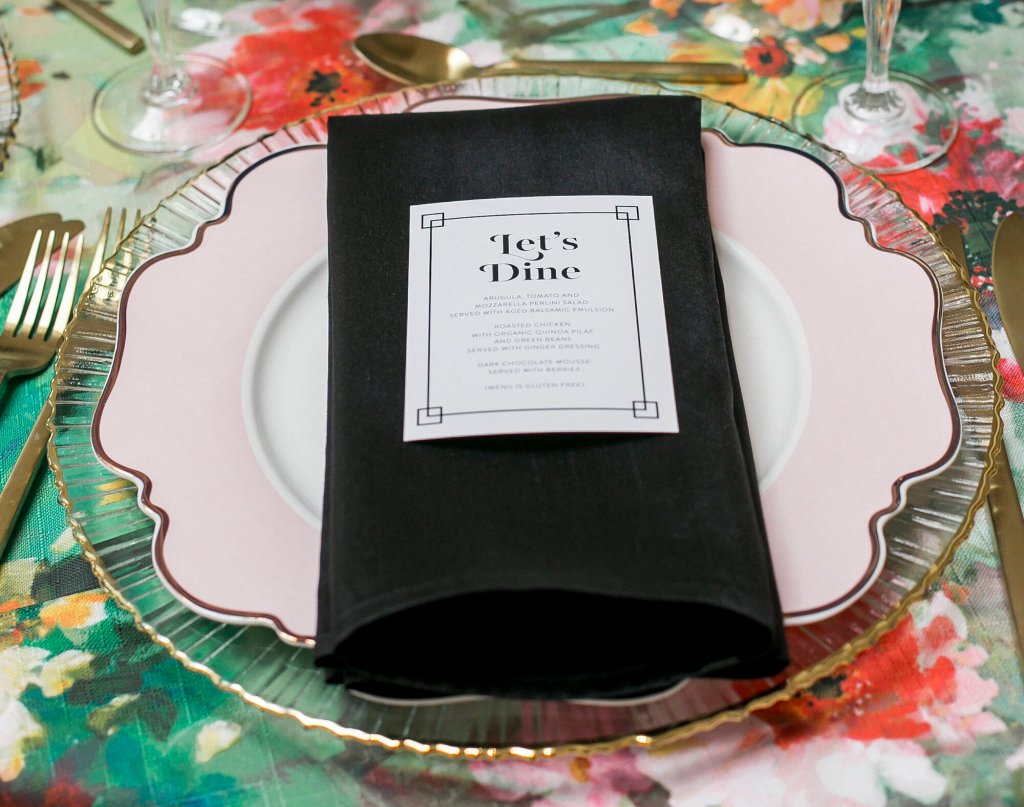Want to Pitch The Press as a Wedding Business? Read This Step-By-Step Guide

If you’re going dedicate time out of your busy schedule to pitch yourself or your wedding business in hopes of landing an interview, getting published in a sought-after magazine, or having your products featured, then you need to pay extra special attention to the way in which you pitch yourself. Never done it before? That’s okay! We tapped PR expert and Educator, Amy Shey Jacobs (and founder of Chandelier Events) for her top tips to putting together a PR pitch plan. Here, a step-by-step guide to crafting the perfect pitch!
1. Do Your Research and Find Out Who Covers Your Beat
Find out the names of the writers and editors who cover the topics that align with your wedding business. You would want to find out who writes real wedding stories for websites and magazines. For other non-wedding related publications and TV stations, you’ll want to find out who covers the beats that would most likely include your business. So maybe you’re looking for a beauty editor, a lifestyle producer or a food editor. Whatever the category, you need to get to know the people behind the stories and TV segments that you want to be apart of. So read those publications cover to cover and pay attention to the masthead (as in the names of the writers listed out in the front portion of every magazine). Watch your local news and find out who the producers are that work on the shows. (They’re oftentimes the ones who call on experts for their segments and book the talent — you!).
Expert PR Tip: Don’t try to get press for the sake of press. Do some strategic planning and think about your target couples (your dream clients you want booking you). Where do they go to look for ideas and inspiration? What sources inspire them? Make a list and then start your research.
2. Get to Know The Writers, Editors and Producers Behind The Publications
Public relations is a relationships-built industry and if you want to land press for your business, you’ll have to take the time to develop a network of people who work in the press. How to make that happen? Get out there and network. Go to local events and do what you can to foster relationships with as many people as you can. When you meet someone for the first time, make sure you introduce yourself in a way that articulates what it is that you do. That way, they know how to refer to you when they go off and recommend you for a potential press opportunity.
Expert Tip: Use social media to engage with the press. Figure out their channel of choice (some reporters use Twitter all the time while others are all over Instagram and Facebook). Follow them on those channels and engage with their posts where appropriate.
3. Find Your Angle
You have to think like an editor if you want them to pay attention to you and your pitch. So put on your journalist hats and ask yourself whether you can contribute content or expertise around a news-worthy story.
Expert Tip: To get you started, try coming up with an angle for at least one of the following:
- Relate your story or product to a recently published story
- Similarly, relate your product or story to a franchise that the publication runs in every issue (Hint: These are usually called something like “hot trends.” You’ll oftentimes find these franchises toward the front of the magazine.)
- Align or create an angle related to a current news story (The upcoming Royal Wedding is a great example!)
4. Write an Eye-Catching Subject Line
Once you’ve found your angle, you need to craft a good email subject line for your pitch. Journalists get 100s of 1000s of pitches every week, so your job is to figure out how to ensure that yours doesn’t get lost in their inbox. Your subject line needs to be simple, clear, and easy-to-understand (think like a writer for Buzzfeed!). For starters, always refer to your angle in the subject line (so it’s not, “Pitch for you” it’s “5 Royal Wedding-Inspired Cakes”). If you have a photo or a visual of any kind, include it and reference it in the subject line (eg, “Fresh Coconut Water Bars Are Hot for Weddings This Summer! [Photo Attached]”).
Expert PR Tip: A few more dos and don’ts for your subject lines below:
DO…
- Be Specific (eg, “Helicopter Flight and Wedding Arrivals”“New Venue Opening in Cleveland 2018”)
- Reference The Publication or Segment (eg, “For The Knot Magazine – Mardi Gras Wedding in New Orleans”)
- Be Timely — Trends Work Well! (eg “Wedding Hairstyle Trends — What’s In and Out!”)
DON’T…
- Be Generic (eg, “Caterer”“Hyannis Wedding Content”)
- Send Irrelevant Pitches To the Wrong Editor (like sending the beauty editor a pitch on new video technology)
- Try to Be Cutesy (eg, “Soulmate or sidekick Buddy or beau (Bridal Party Gifts for all”)
5. Craft Your Pitch
The very last step is to actually write your pitch. If you’ve done your work above by establishing a relationship with your recipient, finding a newsy angle, and writing a great subject line, this should be easy for you. Reference the journalist by name in your intro. And keep your email pitch super simple, short and scannable — think 200 words or less!
Expert PR Tip: Try ending your pitch with a question to pique their curiosity and get the conversation going. Some good questions to end your pitch with:
- Are you working on a story that you think might relate?
- Would you like to see more photos?
- What’s your address? I’d be happy to send you some samples.
Photo Credit: Love Life Images
Let's grow your business together!
Start advertising on The Knot and WeddingWire, the top two wedding planning platforms.


